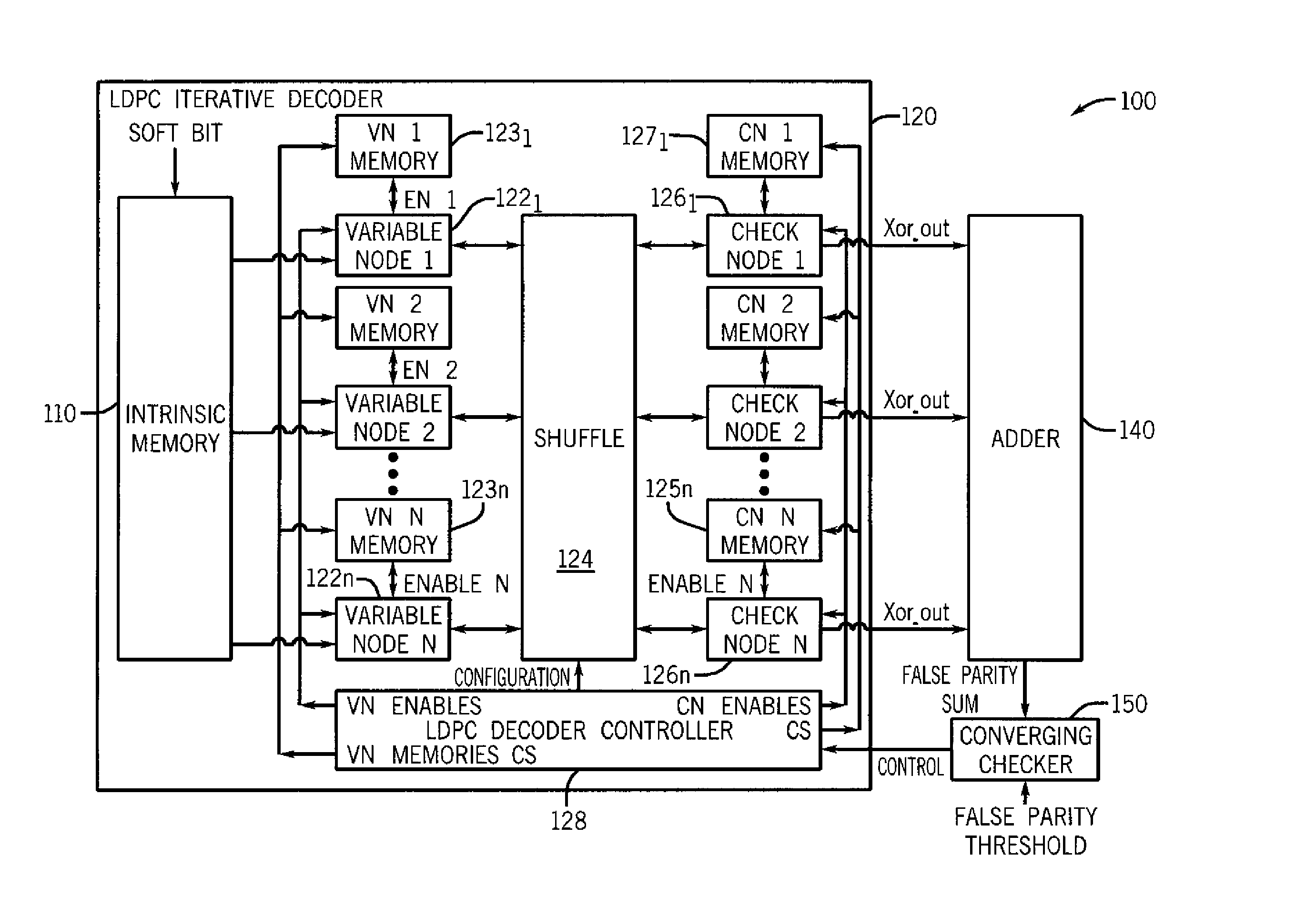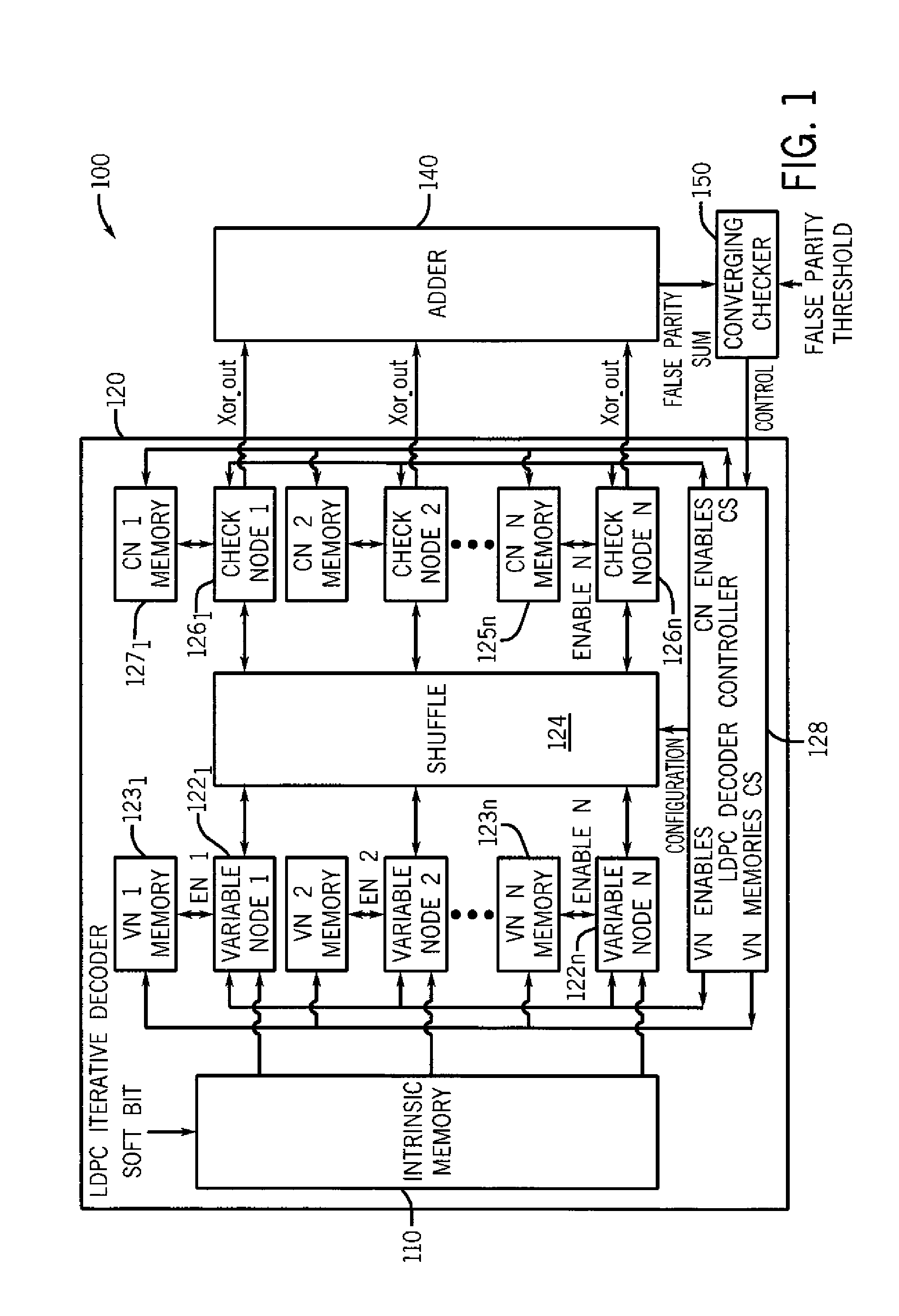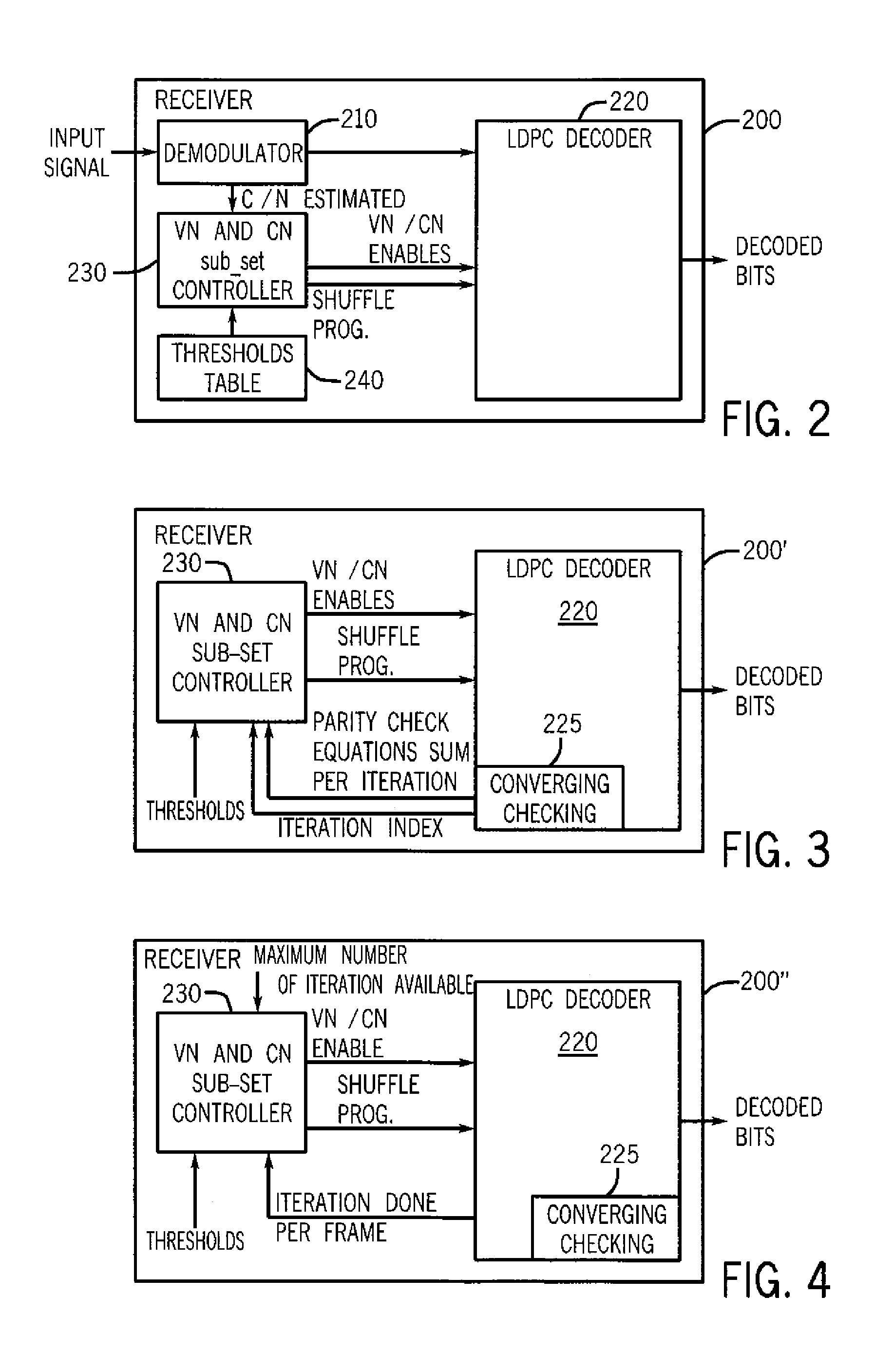Techniques to control power consumption in an iterative decoder by control of node configurations
a technology of node configuration and power consumption, applied in the direction of coding, instruments, code conversion, etc., can solve the problems of increasing the complexity of a demodulator, increasing power consumption, and thus power dissipation of a package that includes such a decoder, so as to reduce the variation of supply voltage
- Summary
- Abstract
- Description
- Claims
- Application Information
AI Technical Summary
Benefits of technology
Problems solved by technology
Method used
Image
Examples
Embodiment Construction
[0024]In various embodiments, power consumption by a low density parity check (LDPC) decoder can be controlled in a manner to provide smoother regulation of a power supply that provides power to a receiver including such a decoder. By providing a smoother level of power consumption, sharp peaks and drops in the supply voltage can be avoided. In this way, negative effects of such unwanted power supply variances can be avoided, and thus embodiments act to filter a supply voltage provided to the decoder.
[0025]Although the scope of the present invention is not limited in this regard, in one embodiment this power consumption control can be realized by ramping up and ramping down a number of individual processor units (and corresponding memories) of the decoder during decoding operations. By providing an increasing progression of enabled processing units and corresponding memories at a beginning of a decoding cycle and a corresponding decreasing progression of enabled processing units and...
PUM
 Login to View More
Login to View More Abstract
Description
Claims
Application Information
 Login to View More
Login to View More - R&D
- Intellectual Property
- Life Sciences
- Materials
- Tech Scout
- Unparalleled Data Quality
- Higher Quality Content
- 60% Fewer Hallucinations
Browse by: Latest US Patents, China's latest patents, Technical Efficacy Thesaurus, Application Domain, Technology Topic, Popular Technical Reports.
© 2025 PatSnap. All rights reserved.Legal|Privacy policy|Modern Slavery Act Transparency Statement|Sitemap|About US| Contact US: help@patsnap.com



